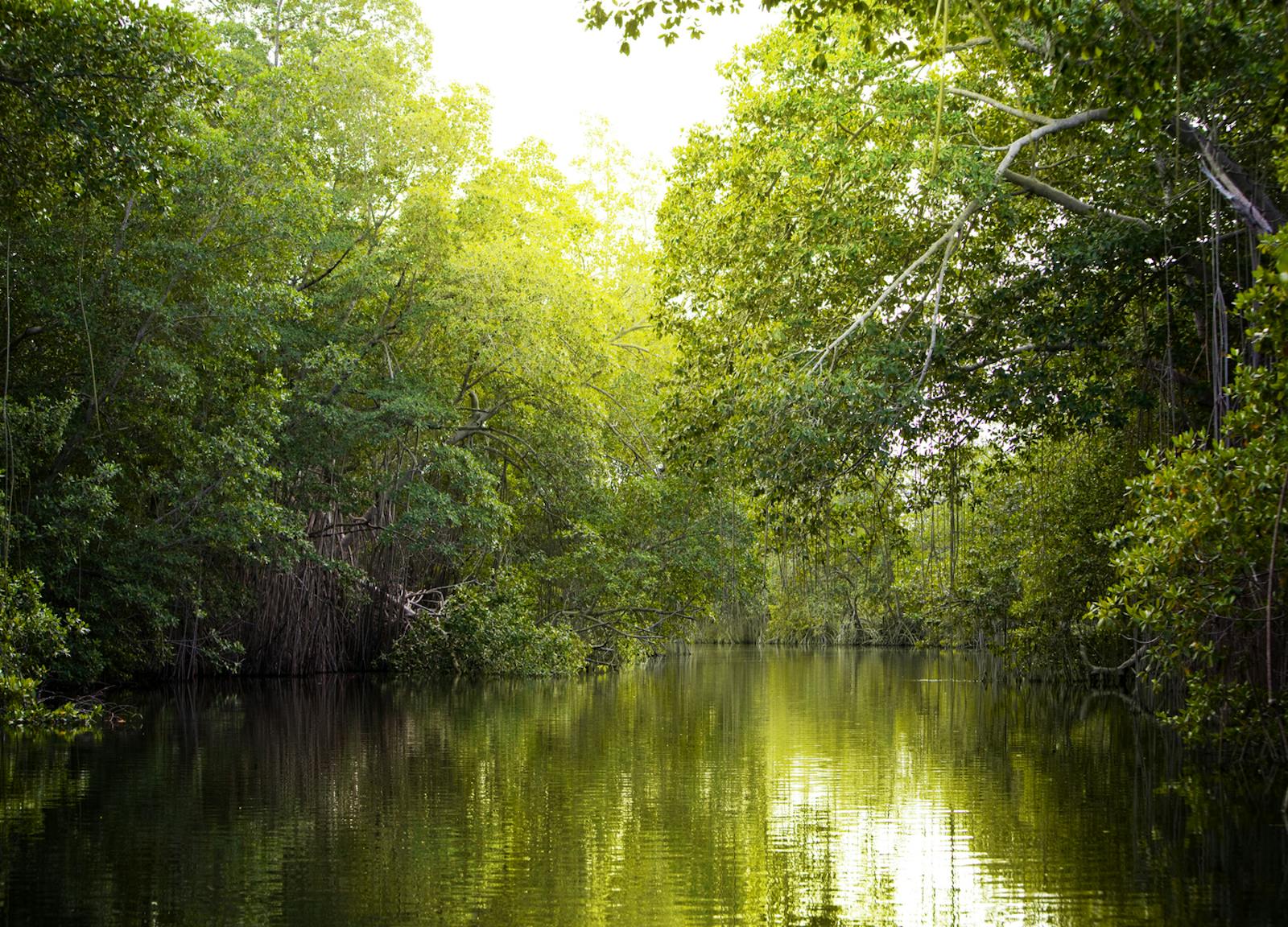Jamaican Dry Forests
The ecoregion’s land area is provided in units of 1,000 hectares. The protection goal is the Global Safety Net (GSN1) area for the given ecoregion. The protection level indicates the percentage of the GSN goal that is currently protected on a scale of 0-10.
Bioregion: Caribbean Islands (NT26)
Realm: Central America
Ecoregion Size (1000 ha):
232
Ecoregion ID:
535
Conservation Target:
48%
Protection Level:
4
States: Jamaica
The critically endangered Jamaican iguana is endemic to the Jamaican dry forest ecoregion and is the largest native land animal on the island. The Jamaican iguana declined dramatically during the beginning of the 19th century following the introduction of the Indian mongoose; only 50 individuals were believed to have left according to a 1990 study. Today with intense predator control and conservation monitoring the population is making progress towards recovery goals. Recovery of this species is considered one of the greatest success stories in conservation science. Today, as a century ago, the Jamaican iguanas can be seen lounging in the treetops of the remaining dry forest eating leaves, flowers and fruit.

The flagship species of the Jamaican Dry Forests is the Jamaican iguana. Image credit: Creative Commons
The Jamaican Dry Forests ecoregion comprises approximately 15% of the land area on the island and covers most of the dry forests near the coast. This includes most of the northwestern, western, and southern coastal areas of Jamaica. The habitats of this ecoregion all lie below 213 m in altitude and have an annual rainfall usually not exceeding 1,270 mm. The fundamental vegetation is dry woodland, considerably modified in many areas by features of the local terrain and human influence in the more accessible areas. There is considerable variation in species composition, with greater diversity in the less disturbed, more sheltered areas.
Of the 3,003 flowering species found throughout Jamaica, 28% are endemic, and of 579 fern species 14% are endemic. This diversity contributes to Jamaica ranking fifth among the world’s islands for endemic plant life. This high level of endemism is attributed to the island not forming until the mid-Miocene and never being connected to another landmass. The plant species Jacaima costata is specifically endemic to the dry forests ecoregion.
Throughout Jamaica there are more than 20 endemic species of bird. Many of which make their homes in the dry forests such as the red-billed and black-billed streamertails, and the least pauraque, considered critically endangered and likely extinct. Jamaica boasts 27 endemic reptile species and 21 endemic amphibian species. Of these, this ecoregion includes Parker’s least gecko, the endangered Jamaica ameiva lizard, the critically endangered blue-tailed galliwasp lizard, and the Jamaican iguana. Many of Jamaica’s 500 endemic species of landsnails can be found in the ecoregion as well. Of endemic mammals there are 3 species of bat and the critically endangered Jamaican hutia, which may be extinct, but previously ranged into the dry forests.
Jamaica has a protected area network of more than 40 sites. The majority of these are Forest Reserves, where until recently, if managed, were areas focused on timber extraction and plantation forestry. Generally, parks and reserves are unmanaged and unmonitored with no effective control over timber or charcoal extraction, hunting, and habitat encroachment for housing or agriculture. However, a project to safeguard Jamaica’s biodiversity began in 2010 which consolidated the management of the National Protected Area System with a focus on financial sustainability and seeks to encourage ecotourism.
Environmental concerns in this ecoregion are characteristic of other populated Caribbean islands. These include deforestation, soil erosion, population pressures, and lack of public awareness concerning conservation. Bauxite (aluminium ore) mining has had a major impact in the island’s forests. Among the most immediate serious threats are deforestation from large and small-scale cultivation and new town/road construction.
Until recently, inland forests were relatively inaccessible; however, the importation of mobile sawmills and continued road construction into these areas have led to increased deforestation and selective cutting. The visitation of over 1 million tourists annually put the natural resources, mainly along the coasts, under enormous pressure and in some areas tourist developments are expanding, away from the coasts into the dry forests.
The priority conservation actions for the next decade are to: 1) improve effective management of protected areas; 2) encourage sustainable ecotourism practices; and 3) increase public awareness and outreach of the importance of protected areas.
Citations
1. Armstrong, S. 2018. Island of Jamaica in the Caribbean https://www.worldwildlife.org/ecoregions/nt0218 Accessed November 6, 2018.
2. Stattersfield, A.J., M.J. Crosby, A.J. Long, and D.C. Wege. (1998). A global directory of Endemic Bird Areas. BirdLife Conservation Series. BirdLife International, Cambridge, U.K.
3. Davis, S. D., S. J. M. Droop, P. Gregerson, L. Henson, C. J. Leon, J. Villa-Lobos, H. Synge, and J. Zantovska. 1986. Plants in danger. What do we know? Gland, Switzerland and Cambridge, U.K.: IUCN.
4. Grant, T.D., Gibson, R. & Wilson, B.S. 2010. Cyclura collei. The IUCN Red List of Threatened Species 2010: e.T6027A12337339. http://dx.doi.org/10.2305/IUCN.UK.2010-4.RLTS.T6027A12337339.en. Accessed on November 6, 2018.



